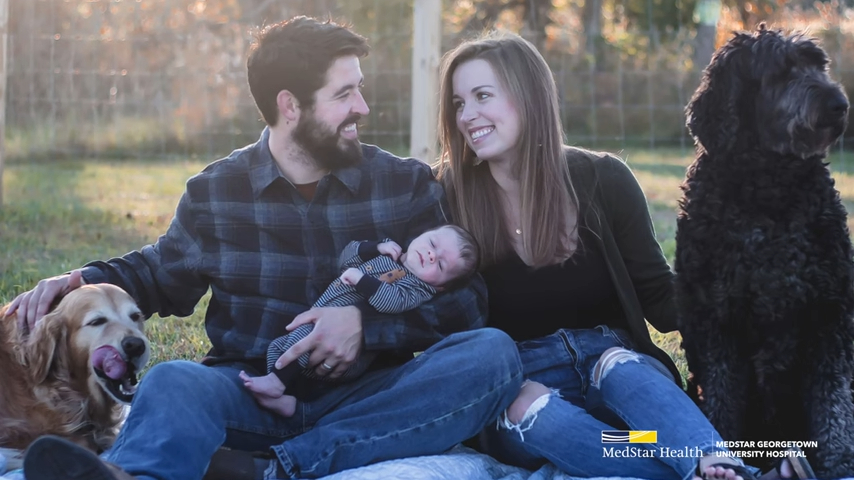
For 15 years, English language learner (ELL) teacher Andrea Cox has dealt with the pain and frustration of frequent migraine headaches. From her late teens through mid-20s, she’d be waylaid by a migraine once or twice a month when she got her period. But her symptoms escalated when she turned 26. After an extremely stressful year that included two moves, a PhD program, and starting a teaching job mid-school year, Andrea’s migraines became much more frequent and her symptoms more severe and long lasting.
“I was getting migraines four or five days a week,” she says. “I had stabbing head pain, brain fog, anxiety, and mild nausea that made it difficult to do anything.”
Andrea found a neurologist and tried several different treatments to manage her migraines, but she was still having frequent headaches that made life difficult. When her neurologist moved, she recommended Andrea see Jessica Ailani, MD, director of the MedStar Georgetown University Hospital Headache Center. Dr. Ailani is fellowship trained and certified in headache medicine, and a highly experienced physician in the subspecialty.
“Migraine is a brain disease that’s partly genetic,” says Dr. Ailani.
“The brain of someone with migraines is more sensitive to changes in the weather, stress, hormones, and not eating or drinking enough. Migraine not only causes throbbing or stabbing head pain, but also upset stomach, vomiting, and light and sound sensitivity that can be disabling.
“As an academic headache center, we have more experience treating migraine patients and more time to spend with each patient. One of the most important parts of what I do is listening to patients to understand their headache journey—what treatments they’ve tried, what triggers their headaches, what their goals are,” explains Dr. Ailani. “Listening is at the center of everything we do and is essential for creating an effective treatment plan tailored to each patient so they feel better and can get back to doing what they love.”
As a preventive measure, Andrea was already receiving Botox® injections for her migraines. Dr. Ailani recommended continuing the Botox and adding a calcitonin gene-related peptide (CGRP) inhibitor, a new class of medication used to prevent and treat migraines. The medication, which Andrea can take in pill form, blocks a protein that’s associated with inflammation and pain in the nervous system of people with migraines. Dr. Ailani also prescribed an antidepressant that is used to prevent migraines, and rizatriptan, a medication that Andrea can take if she feels symptoms of a migraine beginning. At Dr. Ailani’s recommendation, Andrea began working with a nutritionist because certain foods triggered her migraines.
“With Dr. Ailani’s help, I’ve decreased my headache days to five to seven a month—vastly improving my quality of life,” Andrea says. “She and her nurse practitioner, Julia Solis-Mesch, are great. Dr. Ailani is very empathetic and really listens to me and takes my suggestions and insights seriously. We’re partners in my care. Thanks to her, I’m feeling better, enjoying spending time with my husband and toddler, and spending less time suffering through migraines.”
The MedStar Georgetown University Hospital Headache Center
The MedStar Georgetown University Hospital Headache Center specializes in the diagnosis and treatment of people with the full range of headache disorders. The team, which includes four neurologists and two nurse practitioners specially trained in neurology and headache medicine, partners with patients to create a safe and effective management plan.
Medication, lifestyle changes, and complementary treatments, such as biofeedback training, acupuncture, and physical therapy, can be part of the care plan tailored to each patient.
For more information, click here, or to schedule an appointment, call 202-295-0540.
WATCH: Together Andrea and Dr. Ailani curated a treatment plan that worked best for Andrea through her adult life, pregnancy, and beyond.













